
- This event has passed.
Wheel of Life Full Moon Meditation – Pisces
27/02/2021 @ 11:30 am - 12:00 pm
Saturday, 27th February, 2021
12 noon, local time
Sun in Pisces, Water, the Mystic and Healer;
Moon in Virgo, Earth, the Artisan Crafting beauty and perfection.

Whitehall Well straddled by a guardian tree with its protective skirts draped across its stream of ‘pure truth’ and healing.
THEMES:
The quest is how to channel our intuition from what we learn from history? By giving good boundaries to our sensitive ‘inner mystic’ (Pisces), our response may be to craft beauty and perfection (Virgo).
The sun in Pisces can be seen as a symbol of our ‘inner mystic’, which flows spontaneously with love, and a deep devotion to divine love and truth. David Spangler speaks of the innate impulse within us to create wholeness, and this speaks to me of our mystic sense of connection between worlds. It wells up deep inside us and calls for a questing mind, which the sun represents as a conscious, open readiness for the new. This mystic experience is very sensitive and a potent, bridging healing power or the ‘magical child’ within.
In Nature, the trees alongside water sources and courses send their roots deep, holding the earth as it soaks up and distributes the water, and providing boundaries for the flow to reach other areas of the landscape. Many wells and sprints in Wales are associated with ancient forts and settlements, hill top wells and hidden springs were places of healing and celebration.
The word ‘well’ means ‘to pour forth’ (an Indo-European root word), and in myth the ‘spirit of Truth’ is brought forth from a well or a cave, by ‘Time’ – often depicted as a bearded Pan-like figure with a scythe - its sparkling stream flowing upwards through the well. Often named after saints, and the healing power of pure water which might have been rare in earlier days would be treasured and looked after, considered sacred for their purity at a time of brackish, polluted water sources.
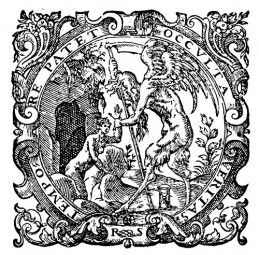
Truth is brought forth by Time: emblem from Francis Bacon’s ‘New Atlantis’ (www.fbrt.org)
Channelling the waters of intuition: A well is created to allow water to rise up to the surface, and in this sense we can associate a well with a ‘protective boundary’ for our intuitive and mystic side. A well dug into a hill settlement supports vital community needs, and when it runs dry the such as Old Sarum, all the city’s places of ritual and town habitations have to move to a more abundant source (i.e. the modern Salisbury cathedral and the water meadows carefully crafted to allow abundant pasture and even distribution of river water.
There are many words related ‘well’, well-stretched throughout our vocabulary, including ‘rolling bubbling water or spring’, a ‘wish’, ‘revolve’ (= that which turns) and a ‘whelk’ an object which spirals. The motion of intuition spirals with inner connection to many levels of reality within and without our physicality, therefore to channel our mystic sense of oneness we are on a quest for the firm ‘stepping stones’ in Nature and cultural history.
The hero kings, the revolving castle and the royal saints of Wales :
The first to be baptised were of the royal blood line of the ancient Kings of Britain who became the first hermits and saints. The many wells and springs associated with the conversion to Christianity from the time of Joseph of Arimathea are dedicated to these ‘godly kings’. Thus Wales and the landscape was considered to be the sacred repository of cultural spirit and spiritual regeneration: the Age of Pisces known by the Druids to be a new dawn for ‘Iesa’ or Jesus of the gospels – (‘the sun god of the Celts, Gaels, Scythians and Druids’ –‘The Irish Origins of Civilisation’ http://www.irishoriginsofcivilization.com)
To protect their spiritual roots and ‘holy land’ while embracing Christ of the gospels, the two King Arthurs built forts encircling sacred landscapes. In his book ‘The Holy Kingdom’ Adrian Gilbert reports on the discoveries of Alan Wilson and Baram Blackett. Their archaeology and study of the Kings Chronicles lead them to discover evidence of two King Arthurs who reigned in Wales, and their country’s sacred landscape which Arthur II protected with rings of forts in fight the Saxons. These forts encircled the Black Hill, the Vale of Glamorgan and Caer Melyn, which could have been one of the original sites of Camelot. Were these a depiction of the ancient practice of terrestrial zodiacs where each constellation related to a knight of Arthur’s Round Table?
‘Wilson and Blackett are also renowned for their huge body of research on Brenin Arthur /King Arthur and state that two Arthurs existed: King Arthur I who died in 400 AD and King Arthur II who died in 579AD.’ https://sovereignwales.com/tag/alan-wilson/#:~:text=Alan%20Wilson,%20together%20with%20Baram%20Blackett,%20state%20that,is%20believed%20to%20be%20a%20Phoenician%20Coelbren%20alphabet.
A tombstone to Arthur II was found at the Church of St Peter’s. One for Arthur I was found on Heart’s Hill near Atherstone (‘Arthur’s Stone’?) in the centre of the British Zodiac on the fragment of which were the words: ARTOIV... TACIT IN... MACI’ indicating a significant Arthur figure who fought to gain land in the North West of Britain, and who was buried near ‘Oldbury’ or ‘Old Town’.
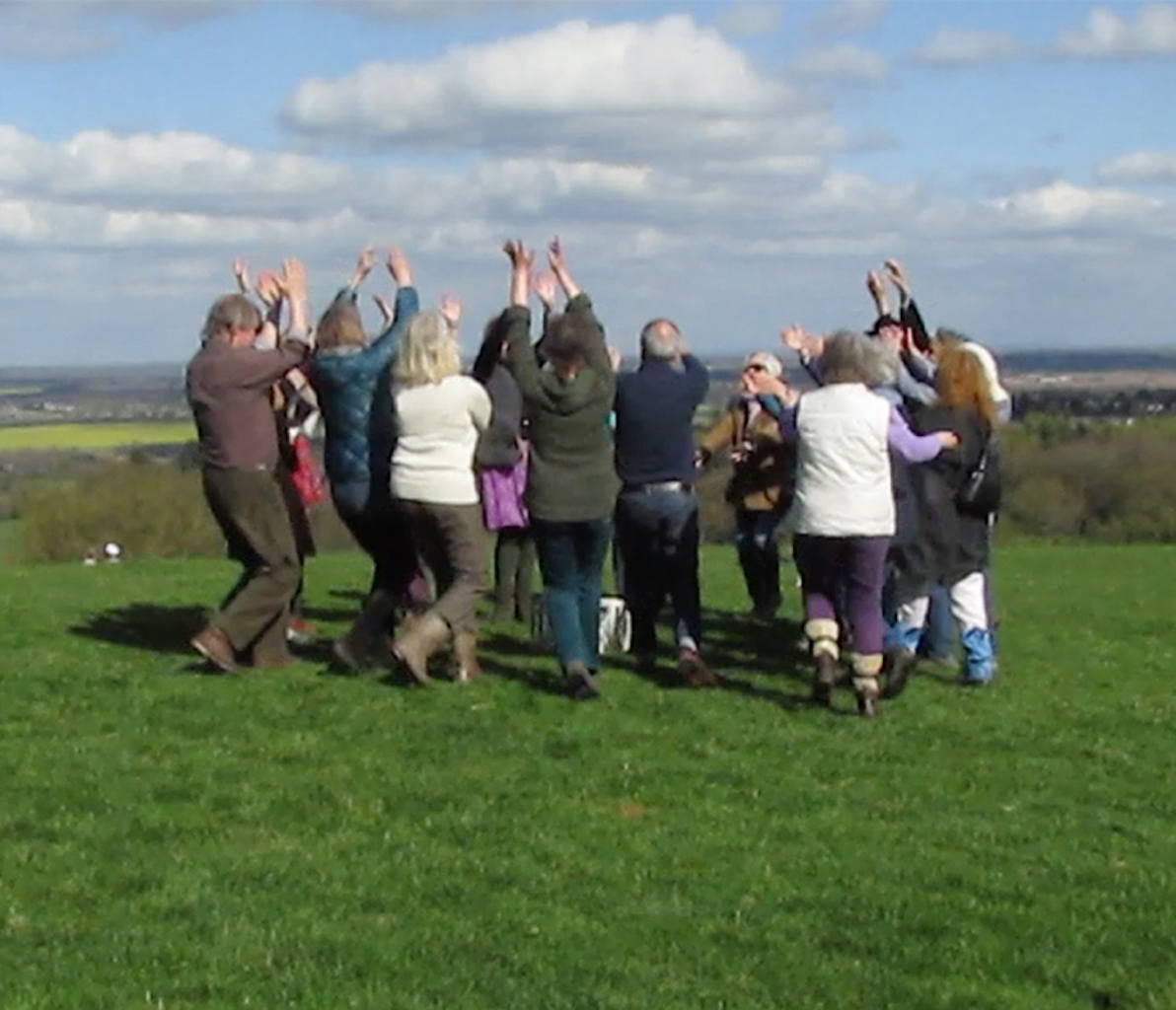
Dancing on Hartshill, Atherstone, 2017.
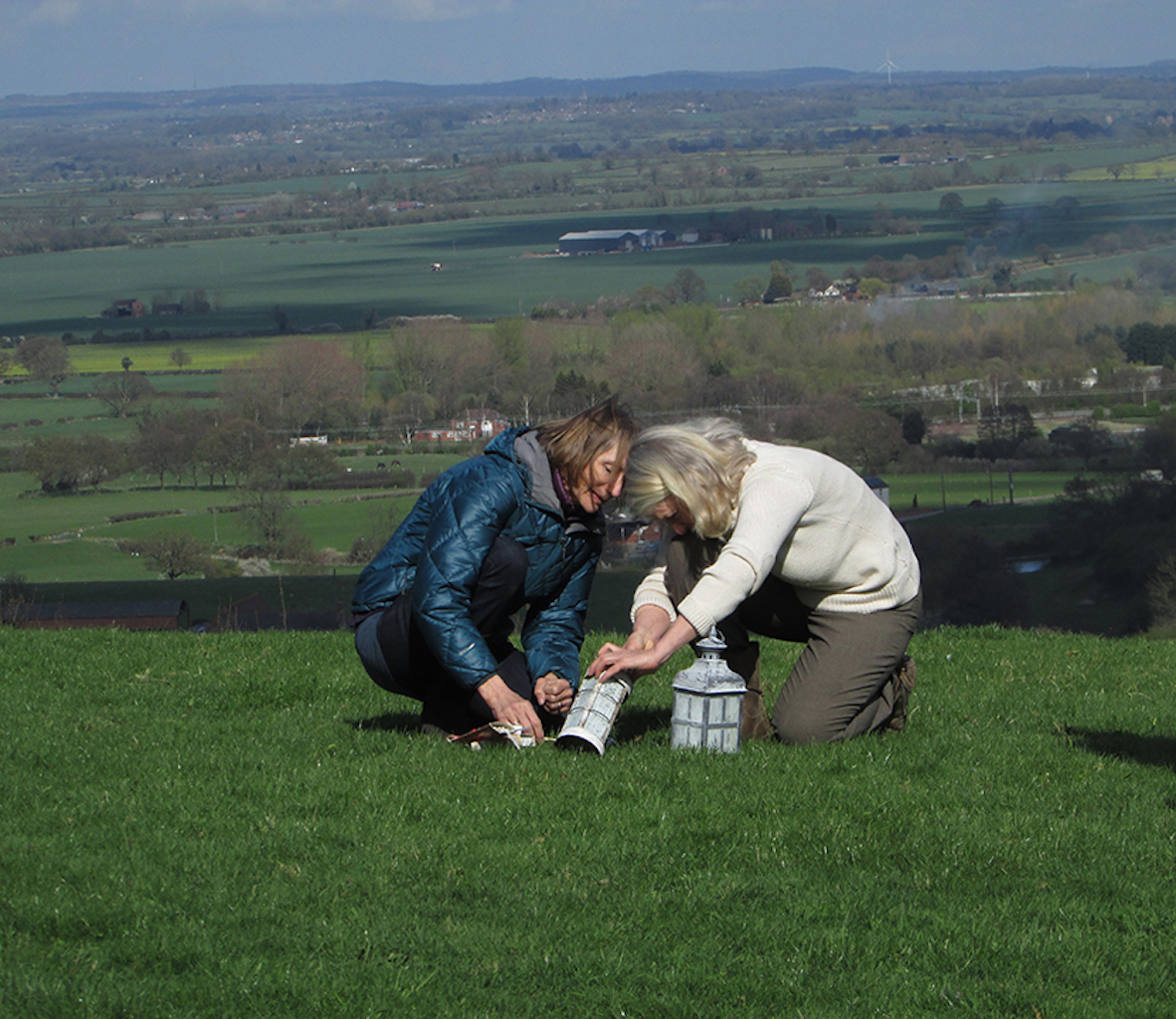
Lighting the lanterns on Hartshill,
Gatekeeper Trust Pilgrims weekend, 2017.
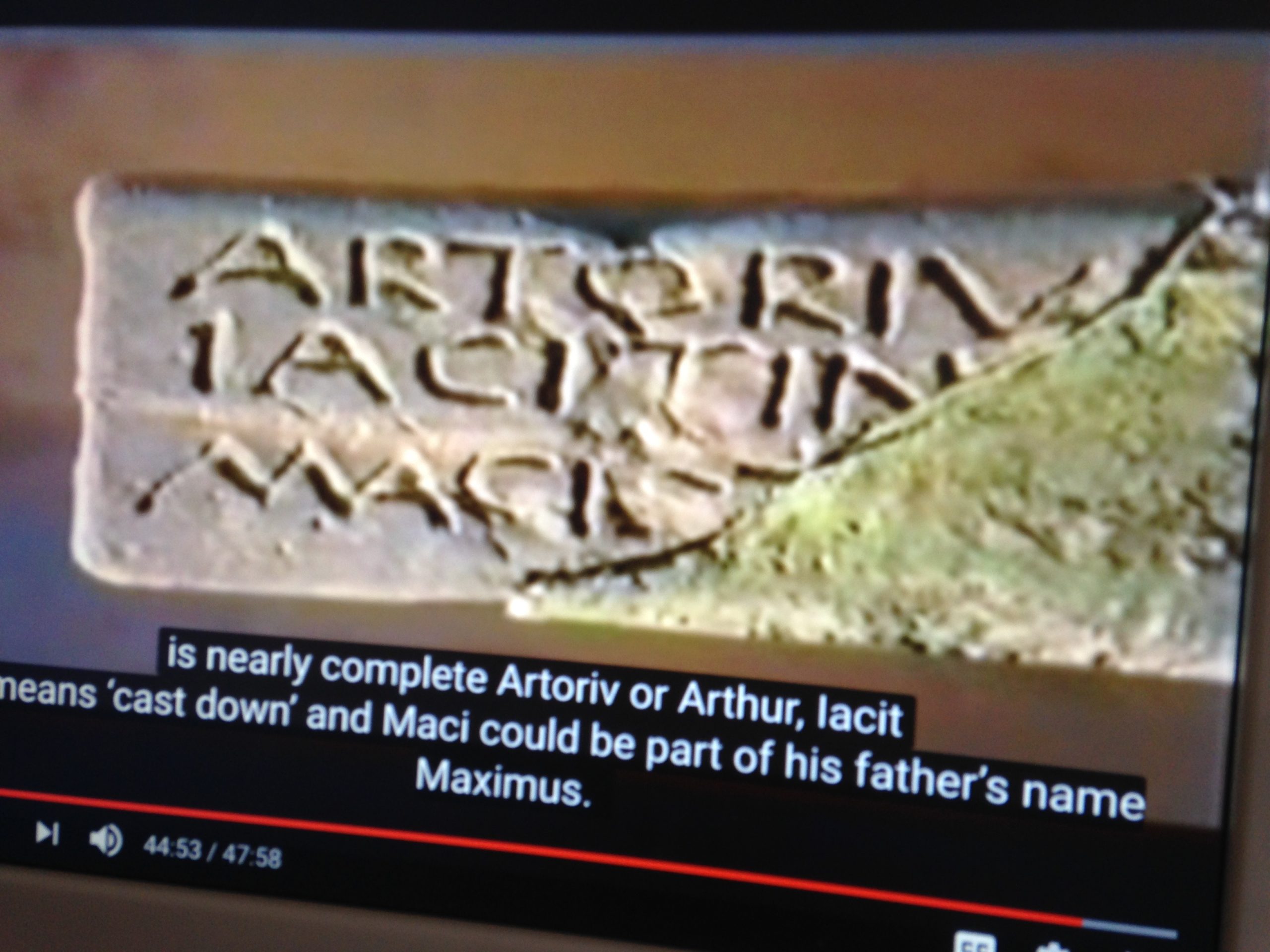
Tombstone of King Arthur II, Hartshill (Wilson and Blackett)
In the process of anchoring our ‘Wheel of Life Project, the Pilgrims Weekend at Purley Chase, Atherstone, where we danced on nearby Hartshill and attuned to the burial mounds of Oldbury.
Wilson and Blackett claim to have found a zodiac, centred around Nevern where the cross of constellations of Cygnus can be deciphered, each marked by a sacred stone or chromlech.
The Welsh Triads menton three churches with ‘diligent harmonies’ in the isle of Brain: Affalach, Caer Caradock and Bangor. These triplicities reflect a sacred symbol of three spirals found in Newgrange, and legends of the ‘Perpetual Choirs’ of which some consider there were three great circles kept active in perpetual chant.
‘Triad 84: The three chief harmonies of the Isle of Brain, the Bangor of Illtyd, the Knight in Caer Worgorn, and Bangor Wydrin in the Isle of Affalen, and in every one of them these Bangors there were four and twenty hundred of saints, that is there were a hundred for every hour of the day and night in their circle in joining praise of service to God without reward without ceasing.’ [p.212]’.
The activities of Gatekeeper Pilgrims in Wales, interpreting history for modern times:
A triplicity in the Pisces section of the zodiac: Trellech (Trileg = ‘three stones’ in Welsh) - By Mandy Pullen.
At astrological Imbolc, Wednesday 3rd February, I and a friend visited Trellech, a village in the very south east of South Wales. The intention was part of a larger body of work involving ley lines and wells in and around the Forest of Dean (Trellech is over the River Wye and within the realms of the Forest).
It had been very wet and from the centre of the village we waded through a boggy field to The Virtuous Well, a sacred well previously named St Anne’s Well after Annis, which means river although I can find no origin to this but there are references to Annis being an old Celtic water goddess. Anne could also be derived from Agnes which means pure and holy. Despite this it is definitely a Bridhe/Brigit Well. According to the plaques it was often frequented by women to heal women’s problems . . .
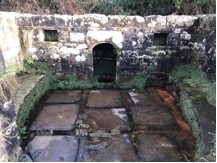
St Anne’s Well ‘The Virtuous Well’ [Mandy Pullen]
We spent some time observing, dowsing the directions and watching bubbles pop up between the stone slabs in the base. And at 3pm, the time of astrological Imbolc, we raised a flask of tea (and cake) and toasted Bridhe. We were immediately visited by a robin that was after some cake crumbs, a blessing in my book. Her red breast mirrored the iron rich water of the well - the orange colour on the right side of the photo.
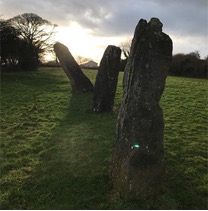
The Harold Stones [Mandy Pullen]
Making our way to the ancient Harold Stones, we noticed a small trough with an old pipe feeding water in at a three way cross of roads. We moved on to the standing stone’s of which there are three leaning at different angles. The name Trellech means three (tre) stones (lech). I found a 20p near the base of one, a definite omen as I gave some 20p pieces to an old yew and oak tree at the Winter Solstice.
Then the Tump Terret, the old motte and bailey, a steep mound in the centre of the village from which you can see the circular valley which surrounds the village, as does the medieval rampant and, on studying the OS map, a circle of wells and springs further out a field or two away. Concentric rings radiating out into the landscape.
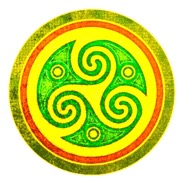
Artistic interpretation of a tryskele found at Newgrange, Ireland.
Pisces marks the time from Feb 19th/20th to the Spring Equinox, often represented with a triskele which means three legs - close to the village name of Trellech (Tri-legs in Welsh) which is actually Tryleg in Welsh. Triskele’s date back to the Neolithic era. There is a triplicity in this landscape that can be seen, and felt, back through the ages. If you happen to chance by Trellech (when restrictions are lifted) there is an archaeological dig as well . . .
‘A RING OF WELLS and THE WELL MAN AT WHITEHALL WELL’ by Jane Embleton
I had a dream recently that showed me a ring of wells and springs that is around where I live in all directions, therefore my task this year is to find the ones that I don’t yet know and to tend the ones that I do - a lovely mission that I gladly accept.
Whitehall well in Devon was the first: I arrived by car with bucket, spade, dustpan, and a brush and a local friend walked over with her enthusiastic collie Dibley. It was encouraging that the hedge around the well had been cut back, but it had a heap of soil in front and so we brushed it down and gave it a sweep. As it was on a T-junction there were several people walking around and about, one person told me where the old door was hidden in a hedge. Another told us about a man called Charles, who had started to tend to it, showing us where he lived. She suggested that we go and talk to him. We invited her to write a blessing on the Bridie cross that I had made out of paper and we talked about planting some bulbs there. We lit a candle and left some rosemary for remembering.
Charles said that his family used to drink the water from the well as a child and that he had suddenly remembered it a few years ago. He then started the process of uncovering it as it had grown into the hedge and been forgotten. He was really happy that we had done some blessings there and told us that it dates from around 1600. He didn’t like our ideas of planting bulbs, though, as he said that wild cyclamens grow there in the autumn. I think I might sneak in a few snowdrops though because there was nothing coming up in the spring. We thanked him for being the guardian of the well and he got all shy and said he wasn’t, but in the end we persuaded him that he was, and he seemed quite pleased with the title!
We were chatting about how lovely it was that we had met all the people that we needed to, when in that brief moment when Dibley dived into a stream and disappeared under a tree that was straddling the stream, with its roots on both sides. When I looked up I could clearly see a lady within the Oak tree wearing a skirt with her arms outstretched and with long hair. I do not remember ever seeing a tree that does that before, but maybe I have just never noticed. I would not have noticed this time had it not been for Dibley. It felt as if she had shown herself to us as thanks for acknowledging the man of the well and for blessing it with the people who mattered on such a beautiful spring like morning Ion such a beautiful spring like morning. [see image at the start of the article]
Heddon River Valley Choir
On a pilgrimage in 2019 a group of pilgrims walked along the Heddon River valley to its esutary on the cusp of Aquarius and Pisces, to the larger Severn Estuary. We sang to the South Wales landscape as a hommage to the tradition of perpetual choirs of Wales and Britain.
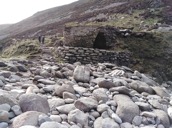
The Heddon estuary.
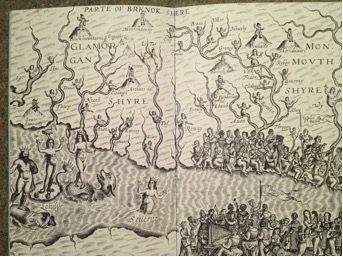
The Medieval map of choirs across the Severn proving how Long lasting the tradition of the Perpetual Choirs is in Wales.
Encircling the land, our ancestors created boundaries of protection, and later mystics felt moved to investigate the symbolism of capturing star constellation maps in the land.
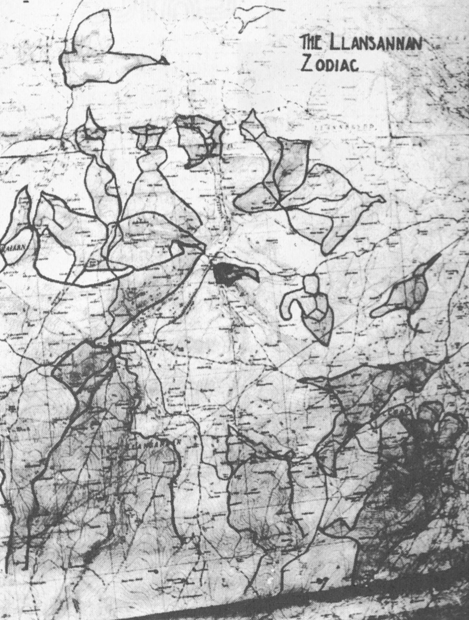
Photo: Michael Scott
Lewis Edward’s Llansannan Zodiac of North Wales [Morien Institute]
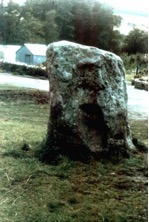
Carreg Pumsaint stone marker:
Centre of Lewis Edwards’ Pumsaint Zodac of Wales. {Morien Institute]
(Taken from the Caer Sidi expedition of Morien Instititute - http://www.morien-institute.org/caersidi.html) The Pumsaint Zodiac is recorded as a Sidydd or Zodiac ‘Caer Sidi’ (turning castle) of the poems of Taliesin, the mythical land – is this an interiorisation of the landscape zodiac, a mythical ‘home’, the paradise of ancient literature? Certainly the old Kings of Britain held sacred the text of Taliesin:
Wikipedia.... ‘The following poem of Taliesin contains the fullest description of the Briton “other world” that mythological literature can provide. It has been collated by Charles Squire (1905) from four different translations of the text, those being of Mr. W. F. Skene, Mr. T. Stephens, Prof. John Rhys, and D. W. Nash. Mr. T. Stephens, in his "Literature of the Kymri", calls it "one of the least intelligible of the mythological poems"
"I will praise the Sovereign, supreme Lord of the land,
Who hath extended his dominion over the shore of the world.
Stout was the prison of Gweir [Gwydion] in Caer Sidi,
Through the spite of Pwyll and Pryderi:
No one before him went into it.
The heavy blue chain firmly held the youth,
And before the spoils of Annwn woefully he sang,
And thenceforth till doom he shall remain a bard.
Thrice enough to fill Prydwen [the name of Arthur's ship] we went into it;
Except seven, none returned from Caer Sidi [Revolving Castle]."
[Wikipedia]
The legend goes like this. Five saints had set off on a pilgrimage and were heading to St. Davids in Pembrokeshire; their names were Ceitho, Celynnen, Gwyn, Gwynog and Gwynaro.
‘Another few lines penned by Taliesin are sometimes connected to Caer Sidi, although they add little knowledge to what has already been stated in the verses above. These lines are contained in a poem called "A Song Concerning the Sons of Llyr ab Brochwel Powys" (Book of Taliesin, poem XIV):
"Perfect is my chair in Caer Sidi:
Plague and age hurt not him who's in it--
They know, Manawyddan and Pryderi.
Three organs round a fire sing before it,
And about its points are ocean's streams
And the abundant well above it--
Sweeter than white wine the drink in it."
Drink from the ‘abundant well’ of Pisces.
Edited by Charlotte Yonge, Mandy Pullen and Jane Embleton, 2021.